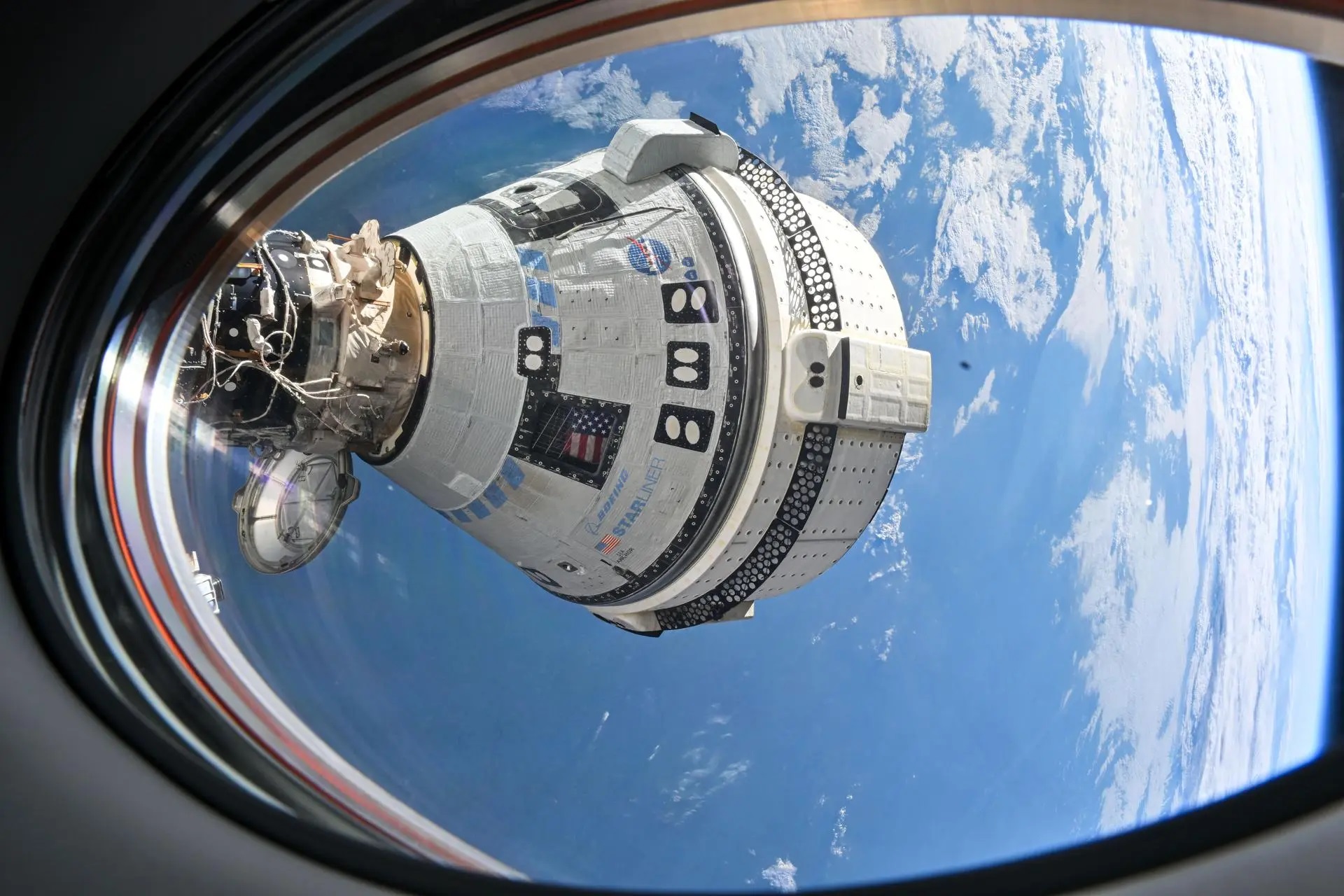NASA and Boeing, alongside many professional and amateur space commentators on social media, have been in deep discussion this past week about whether to return two astronauts on board the Boeing Starliner spacecraft.
The agency’s concern with Starliner - which flew NASA astronauts ‘Butch’ Wilmore and Suni Williams to the International Space Station (ISS) in early June - comes from not having identified a root cause for why multiple of the spacecraft’s thrusters failed during the mission’s docking phase.
US news channel CNBC reported at the weekend that NASA has been weighing seriously the possibility of returning Starliner empty and instead using SpaceX’s Crew Dragon spacecraft to return the two astronauts.
However, there seems little consensus among those responsible for making the decision and the outcome remains unpredictable given the variety of factors involved. Such uncertainty is not aided by NASA’s slightly vague public pronouncements, which stated the following at the end of the week.
“NASA and Boeing teams continue analysing data from recent ground and spacecraft testing as they evaluate the Starliner spacecraft's propulsion system during NASA's Boeing Crew Flight Test mission.
“Teams are taking their time to analyse the results of recent docked hot-fire testing, finalise flight rationale for the spacecraft's integrated propulsion system, and confirm system reliability ahead of Starliner's return to Earth from the International Space Station.
“Forward work for the team also includes finalising the spacecraft's undocking procedures and operational mitigations that could be used in flight, if needed, to build further confidence in the system. Meanwhile, Starliner ground and mission support teams are continuing to prepare for undocking by participating in integrated simulations with space station operations teams.
“Following the completion of Starliner's return planning, which is expected to continue into next week, more information will be shared about the agency's return readiness review preparations and subsequent media briefing. As always, astronaut safety remains the top priority for both NASA and Boeing.
“While engineers conduct their spacecraft studies on Earth, NASA astronauts Butch Wilmore and Suni Williams are closely following the ground team's progress while aboard the Station. The duo has integrated into the daily workload of the orbiting laboratory, giving the station a crew of nine as their mission overlaps with Expedition 71.”
Boeing’s Starliner capsule, nicknamed ‘Calypso’, has now been in space for more than 60 days and the mission was originally intended to serve as the final step toward proving the long-delayed spacecraft is safe to fly lengthy crew missions to-and-from the ISS.
After recent testing, NASA reported that 27 of Starliner’s 28 thrusters “appear to be healthy”. The thrusters, also known as its reaction control system (RCS) engines, help the spacecraft manoeuvre in orbit and are crucial for a safe return to Earth.
But, from an engineering perspective, not having a root cause for why five of the thrusters failed on the inaugural crewed flight to the ISS means that a significant risk remains for more thrusters to malfunction during the return flight.
With credibility firmly on the line - and potentially the lives of two astronauts - NASA and Boeing's careful phrasing of their testing work on Starliner’s thrusters may have walked the line of transparency but provides little in the way of concrete reassurance.
Following the completion of Starliner’s return planning, which is expected to continue at least into this coming week, it is anticipated by media commentators that NASA will share more information about its return readiness review preparations.
The reality, however, is that NASA is in a non win situation. If it decides to send Starliner back empty, it’s a vote of no confidence in Boeing which could even lead the company to cut its losses and withdraw from the programme.
But if Starliner returns home empty without incident, the agency faces criticism from being seen as overreacting to a situation that it publicly declared for weeks was not a significant risk.
Adding to the pressure, Boeing said in an online statement on 3 August: “We remain confident in Starliner and its ability to safely return to Earth with crew, based on an abundance of testing conducted by our teams and at NASA in space and on the ground.”
Starliner - on just its third flight into space - is very much a spacecraft whose performance is under evaluation. It was originally rated for a 45-day mission to the Space Station. Nominally, and once fully operational, it is rated to stay on orbit up to 210 days though long-term battery performance remains untested.
NASA faces sticky choice between Boeing and SpaceX for safe return of astronauts











